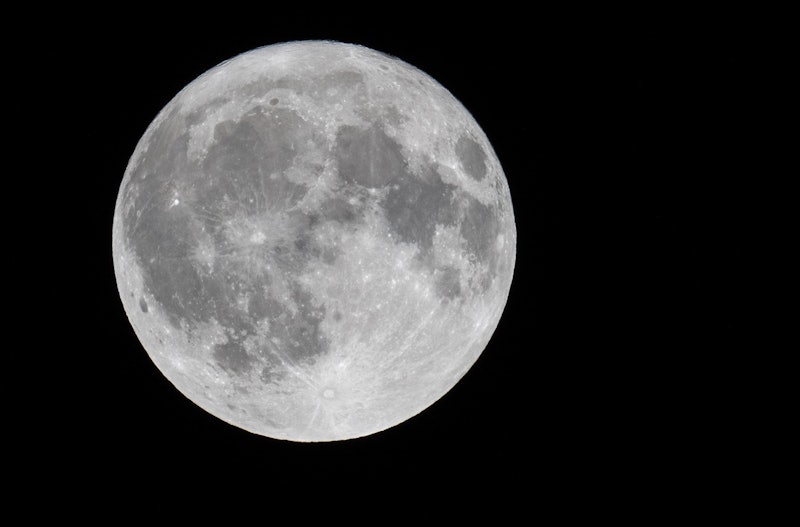Life
Here’s Exactly When You’ll Be Able To See The Full Flower Moon This Month

With spring finally in full swing and summer not far behind, you're probably a lot more focused on what's happening here on Earth than you are on the sky. I know I am! With my life finally free of my puffer coat, I'm spending more time admiring the green trees and blooming flowers than the night sky. Still, weird things happen during the full moon, so I think it's best that we all pause to consider when we can expect this astronomical phenomenon to roll around again. When is the May 2018 full moon? It's coming at the end of the month, so at least you have some more time to prepare for the potential chaos.
According to aptly named Space.com — a source I trust implicitly on these matters, for obvious reasons — the May 2018 full moon will rise on May 29. Best known as the Flower Moon, the May full moon is also occasionally referred to as the Hunter's Moon, Beaver Moon, or Frost Moon south of the equator. Time and Date notes other northern hemisphere nicknames, including Corn Planting Moon and Milk Moon.
Given our associations with springtime, it seems somewhat obvious that we would refer to the coming full moon as the Flower Moon, but there's more history to the nickname than that. Per Time and Date, many of the "moon names" that we use regularly derive from a combination of European and Native American tradition, largely because Colonial Americans adapted terminology from the locals they encountered after moving to the States. Many of this terminology was inspired to begin with by changes in weather and vegetation, which were easily identifiable signs of shifting seasons in the years before we had more advanced meteorological technology.
May's full moon is known as the Flower Moon, of course, to honor the many wildflowers that bloom during the month of May in the northern hemisphere, specifically, according to Time and Date. Native Americans observed the arrival of flowers like anemone, wild garlic, indigo, bluebells, lupine, sundrops, violet, and others and came to acknowledge the accompanying full moon period accordingly. After a long winter, why wouldn't they want to celebrate those wildflowers as much as possible?
May's full Flower Moon is also somewhat unique because of the time that it will rise in the sky. According to Moongiant, the moon will be totally full on May 29 at 10:19 a.m. EST. Since we typically associate all things moon with a dark night sky, I fully understand if this specific timing seems puzzling to you. Allow me to explain.
Per Time and Date, the full moon of any month does technically take place at the precise instant when the sun and moon are aligned on opposite sides of Earth. The official term for this moment of alignment is "syzygy" (yes, that's a lot of consonants), at which time the moon is usually only visible in the parts of the world where it's nighttime. Basically, while it will be broad daylight here in the U.S. at the precise moment that the May 2018 full moon rises — 10:19 a.m. EST on May 29 — it will be dark on the other side of the Earth, and people there will actually be able to see it clearly.
That doesn't mean that we won't get a peek at that stunning image of a bright orb in the sky. Time and Date notes that the Flower Moon should still appear full when it rises on the evening of May 29 stateside, even if the instant of syzygy has passed. You may even notice it looking full (or nearly full) on the evening of May 28!